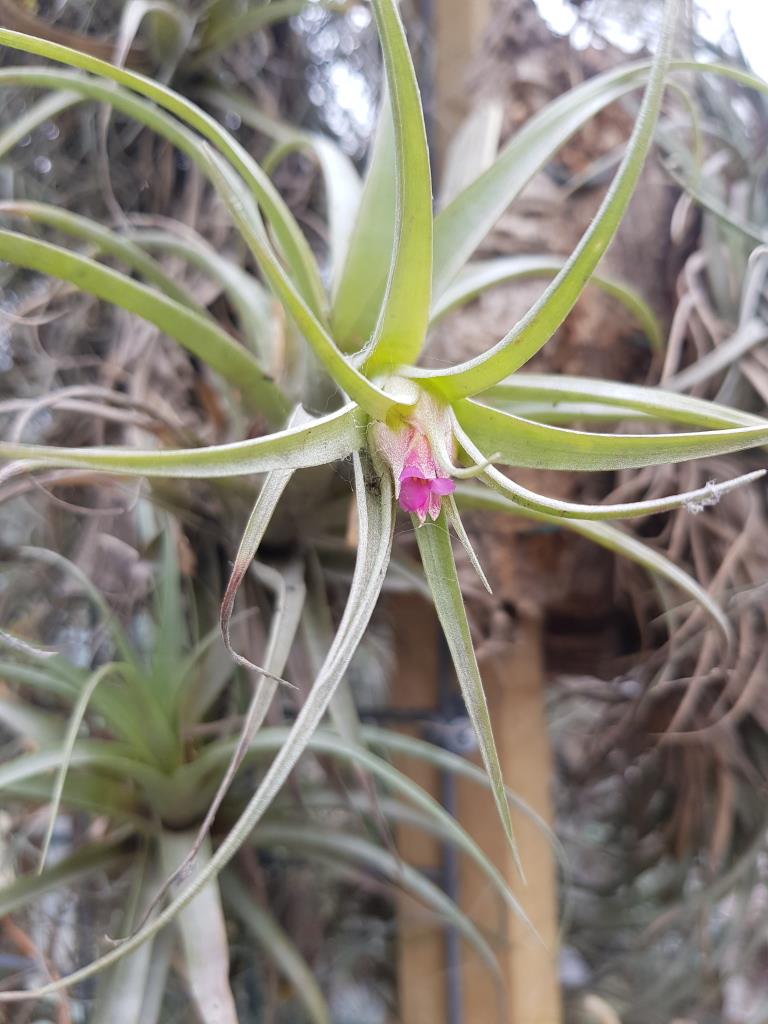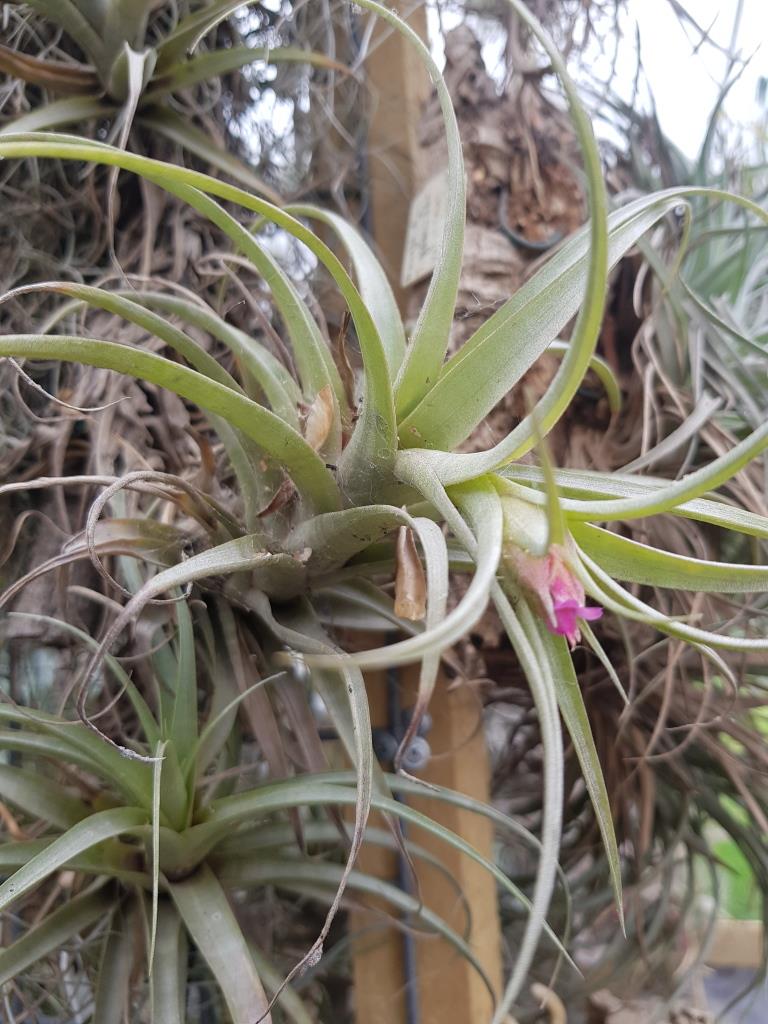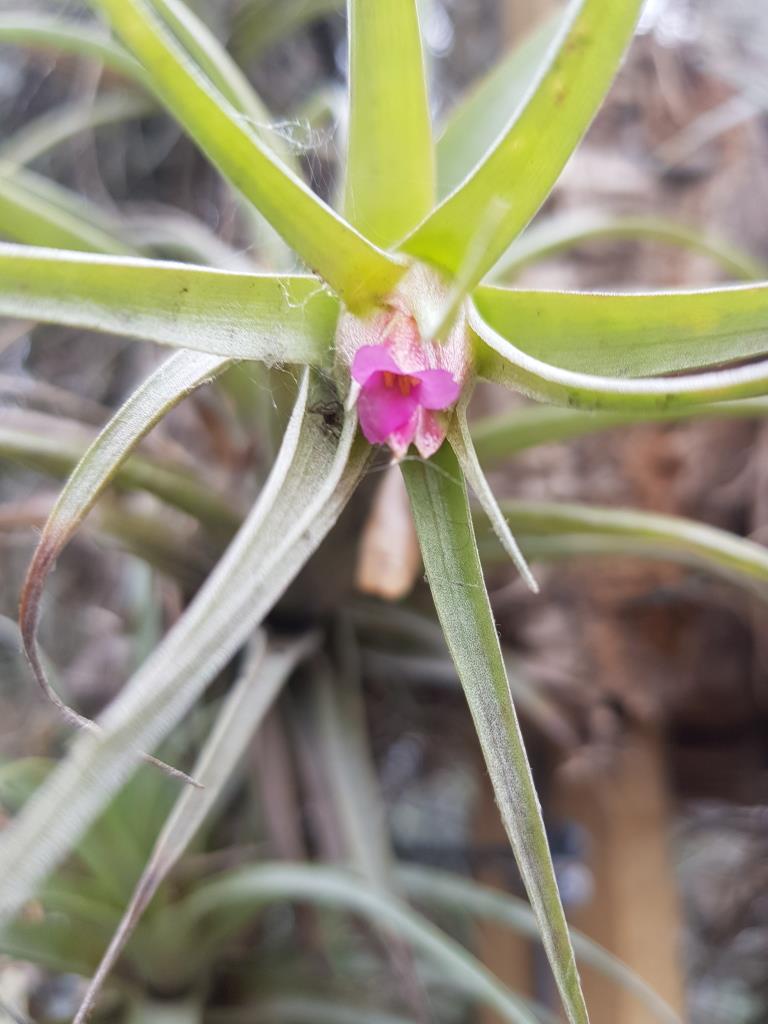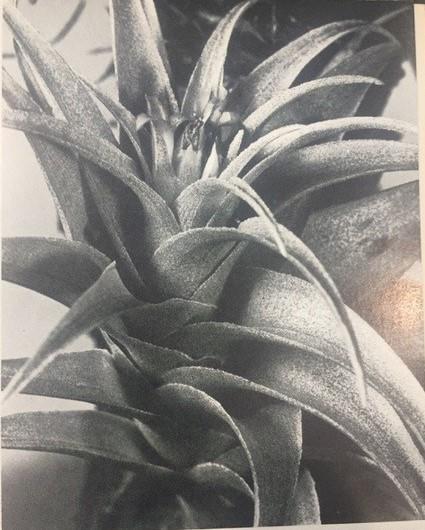Tillandsia calocephala
Click thumbnails for full size, scaled to a new window.
Tillandsia calocephala
currently synonomous with T. nana.
W. Rauh. "In general, we agree with L. B. Smith, but the southern Peruvian T. calocephala is quite different. It is much larger than the Tarma plant and the "involucrum" beneath the flower head is more distinct(p.172-173).
The problem is that the type of T. calocephala is from Cohabamba and the type of T. nana from Peru "without locality" and this contradict the statement by Rauh.
The whole T. spaerocephala complex need a revision."




| Brenton Cadd 08/21 aff. T. sphaerocephala/nana group |
calocephala from Rauh book |
Brenton Cadd ... "Some photos of a plant I am "plant sitting" for Chris while he relocates."
Chris Larson ... "I thought that I'd lost this one. It was collected at the same site as T. aff churinensis (attached) that a few of you have - back in 1998. A little to the south of Ayacucho - just after my GPS machine broke down. There were only these 2 plants at this site.
When I saw it - my mind went to T. calocephala - something that was in the Rauh book which was my first real tillandsia book - back in the early 80s.
Of course this is also close to the area where T. nana comes from, and it looks sort of like a larger form of T. nana.
I found that T. calocephala had disappeared into the world of synonomy - no longer on taxon or the DVD - this was after I first flowered this plant at home - probably around 2000.
Now I find that T. calocephala has reappeared on Taxon.
But the last tillandsia disc does not have T. calocephala on it and my copy of Rauh's book is packed away.
Does anyone have data on this species or feel like offering comment ?"
Bruce Dunstan ... "From my copy of Rauh that was gifted to me by Bobby Powell as a Gold Coast Library book that had been taken out of circulation."
Tillandsia calocephala Wittm., 1916 (III.94)
(calocephala(us) calos = beautiful; cephalus = head)
In the non-blooming stage, can be confused with T. cauligera (see page 106).
Plant stemmed, 20-30 cm long;
Form in a tight spiral, frequently bent to one side, bent upwards, 6-8 cm long;
Leaf Scape not clearly delineated, about 2-2.5 cm wide, upper side with thick brown scales;
Leaf Blade narrowly triangular, long-tapered, 1.5-2 cm wide at the base, with curled edges, thick grey-brown scales;
Scape very short, 4-5 cm long, upright or angled upwards, enveloped by the leaves;
Scape Bracts similar to the leaves;
Infloresence compound, compact head, 2.5-3 cm long;
Primary Bracts wide oval, pointed awl shape, surpassing the basal spikes, the upper ones united with the spikes;
Sepal very close, compacted into a head, about 1.5 cm long, laterally flattened, 2 to 3 flowers;
Floral Bracts oval lanceolate, pointed, about 1 cm long, somewhat shorter than the sepals, keel on the back, scaled, red;
Flower about 1.7 cm long, red;
Sepals lanceolate, keel, naked, about 1.1 cm long, cutaneous;
Stamens enveloped by the flower;
Habitat Southern Peru (Cuzco) and Bolivia, epiphytic on cliffs at altitudes between 2,500 and 3,500 m.
Cultivation Easily grown; an interesting species.
Chris Larson ... "Eric: Any thoughts on calocephala ?"
Eric Gouda ... "Hi Chris, T. nana is still a puzzle. I had several plants flowering and all looked different. The following could be found in Rauh 1974."
Notes on Peruvian Tillandsias (2)
Authors:— W. Rauh
Publication:— Journal of the Bromeliad Society 24(5): 158-176 (1974)
Taxonomy:— Tillandsia calocephala According to L. B. Smith (Phytologia Vol. 21, March, 1971) T. calocephala is synonomous with T. nana.
In general, we agree with L. B. Smith, but the southern Peruvian T. calocephala is quite different. It is much larger than the Tarma plant and the "involucrum" beneath the flower head is more distinct. (p.172-173).
The problem is that the type of T. calocephala is from Cohabamba and the type of T. nana from Peru "without locality" and this contradict the statement by Rauh.
The whole T. spaerocephala complex needs a revision.
The photo attached is the last T. nana I got from Dotherer in Germany and is quite small, but I have several others."
Chris Larson ... "Thanks Eric & Bruce
It is interesting that both of the plants found at this site south of Ayacucho (1/2 hour? - as I said the GPS had stopped working at the last stop Nth of Ayacucho) are seemingly so different from other species.
Looking again at the Rauh photo I realised this is not T. calocephala - something I think I realised when I got back from Peru that time. (23 years later some things stick - some things don't. The find is still clear as a bell - the taxonomy - not so much. The thrill of the hunt is something else again!)
The plants found at this site were, T. aff churinensis, and the thing I've thought of as T. calocephala - but now I believe not.
Obviously the plant has affinity to the T. sphaerocephala/nana group. We found this plant about 2pm and found T. nana around 4 pm - both dusty on the side of the main "highway" (right beside it).
Ayacucho was where Guzman, the head of the Sendero Luminoso, was a professor at the university - and this was just south of there - approx 6 years after he was caught - so the road wasn't that good, even though it was the main highway from Lima to Cuzco - the highway was nearly all dirt road in this area. Botanists wouldn't have been welcome here in the 70s through to the early 90s - I wasn't game to do this road in 1989.
As with the aff. churinensis, this plant is different. Dotterer also had the aff. churinensis - Renate had got it from Dotterer's and was reportedly keen to describe it as a new species after I gave her locality data. (So said Len Colgan & Derek Butcher.)
The aff. nana from this locality is also substantially different from the T. nana 2 hours south - and the same as the other photos we see posted as T. nana - and different to the one I have from Holm.
This one:
1. only a small number of flowers.
2. The petals are not so long and do not recurve.
3. The petals overlap more.
4. The plant is much larger.
What to call it?"
Updated 20/09/21



